Must-See Places in Italy
Explore Italy’s most beautiful places and uncover why it’s the world’s number one travel destination — a journey through beauty, culture & the iconic dolce vita.
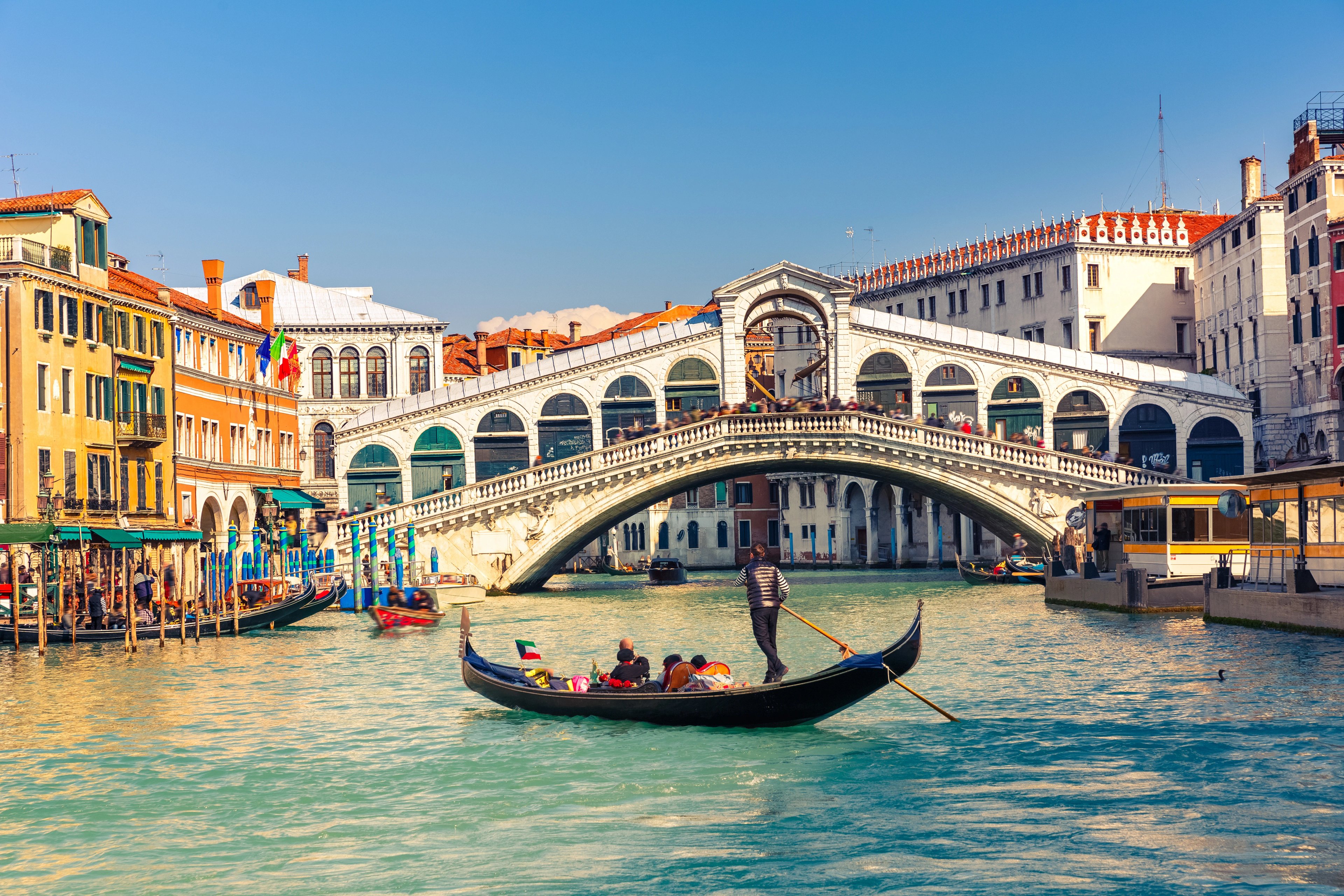
Quick Links
Home to 61 UNESCO World Heritage Sites — the most in the world — Italy is a living masterpiece. It’s no surprise that this country ranks as the number one travel destination on Earth.

Italy has a route for every skill level and every traveler — from cultural explorers to adventure seekers and food lovers alike.
Throughout our cycling tours, you’ll encounter some of the country’s most unforgettable landmarks — places where history, flavor, and scenery meet in perfect harmony. Below, we’ve gathered a list of our bucket-list landmarks, grouped by region.
So, what’s there to see?
1. Northern Italy: Dolomites & the mountains
Where Alpine grandeur meets lakeside serenity, Northern Italy is a region of bold contrasts. Towering Dolomite peaks give way to mirror-still lakes, elegant towns, and winding roads through green valleys. It’s a place where nature and culture intertwine — glaciers above, vineyards below, and Renaissance cities never far away.
This is home to some of the most scenic cycling holidays in Italy, including the Ultimate Dolomites Bike Tour or if you prefer more comfort, explore the region on an e-bike. Expect breathtaking views, medieval castles, and tranquil lakeside promenades.
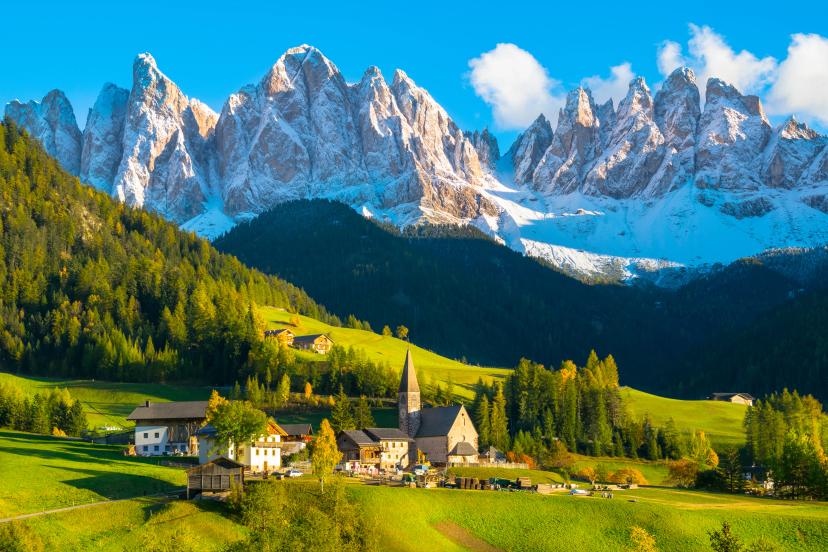
Dolomites
Declared a UNESCO World Heritage Site in 2009, the Dolomites are among the most extraordinary mountain landscapes on Earth. Their jagged limestone peaks glow pink and orange at dawn and dusk — a natural phenomenon known as enrosadira. The range’s unique geology, formed from ancient coral reefs, creates surreal rock towers and plateaus rising above lush valleys.
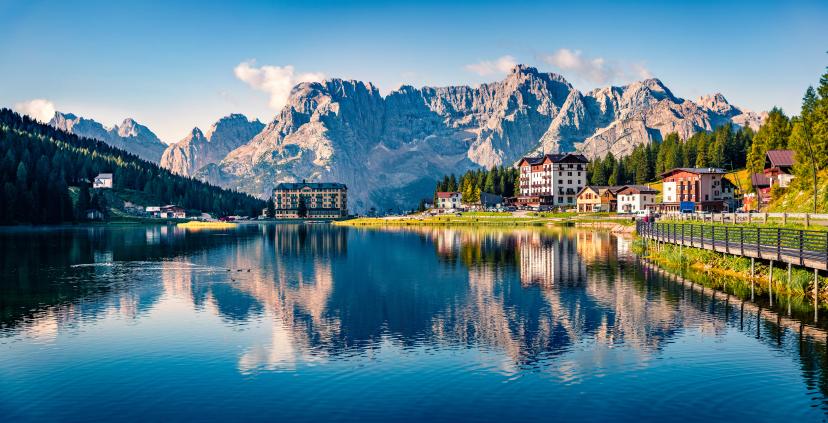
Lake Misurina
Set at 1,754 meters and encircled by majestic peaks, Lake Misurina is often called the “Pearl of the Dolomites.” Its calm, mirror-like waters reflect the Sorapis and Tre Cime di Lavaredo, creating one of Italy’s most photographed alpine scenes. Local legend tells of a spoiled princess turned into the lake itself — her tears forming its depths.
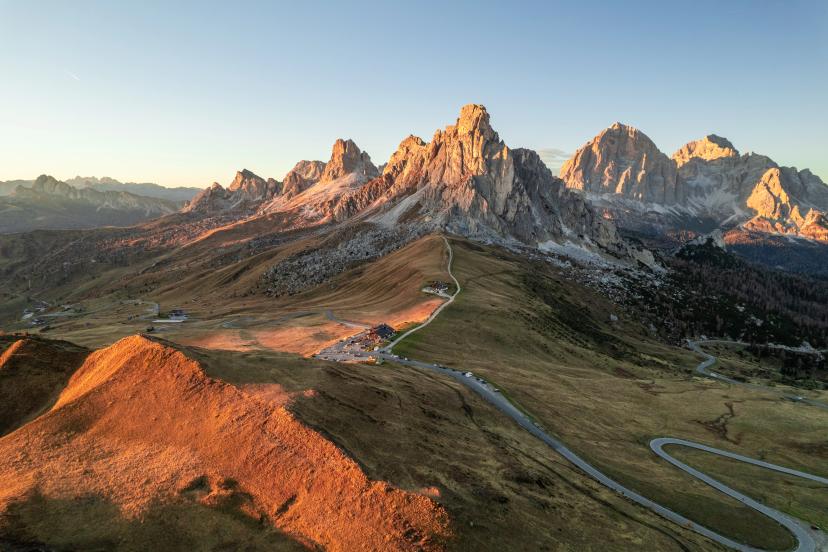
Passo Giau
Passo Giau is one of the most scenic high mountain passes in the Dolomites, standing at 2,236 meters. The road climbs with 29 hairpin bends and has often featured in the Giro d’Italia, making it a legendary route for cyclists. From the top, the views stretch to peaks like Tofane and Marmolada, making it a favorite stop for photographers and riders alike.

Sella Ronda
The Sella Ronda is a 40-kilometer circular route around the Sella massif in the Dolomites, linking four passes: Sella, Gardena, Pordoi, and Campolongo. In summer, it is a famous cycling loop; in winter, it becomes one of the world’s most popular ski circuits. The ride offers constant views of the Dolomite peaks, a UNESCO World Heritage Site.
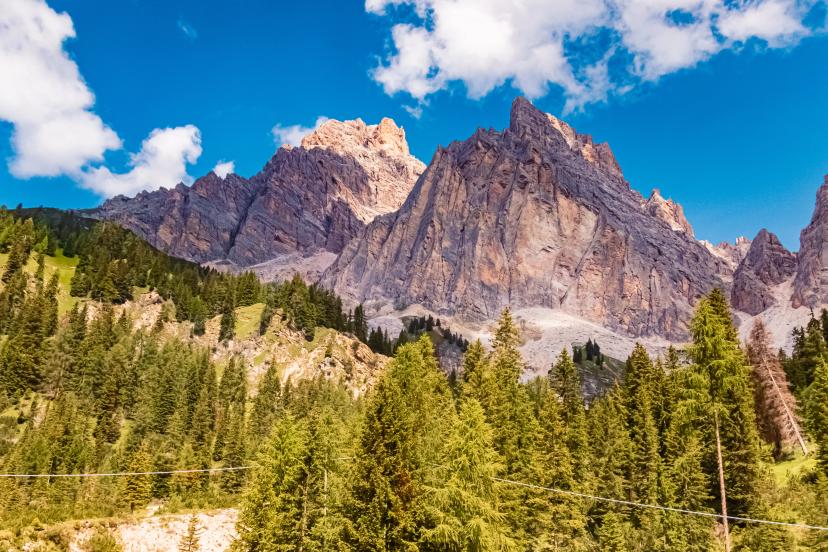
Passo Tre Croci
Connecting Cortina d’Ampezzo with Auronzo di Cadore, the Passo Tre Croci (1,809 m) takes its name from three crosses commemorating a tragic 18th-century story. The pass offers one of the Dolomites’ most breathtaking routes, framed by dense pine forests and vertical limestone cliffs.

Col de l'Izoard
Rising to 2,360 meters in the French Alps, Col de l’Izoard is legendary for its striking landscape and its role in the Tour de France. The upper slopes, known as Casse Déserte, resemble a rocky desert — a surreal expanse of eroded cliffs and scree. The pass offers breathtaking views of the Queyras mountains and an unmistakable sense of high-alpine drama. At the summit stands a monument honoring cycling’s greatest champions.
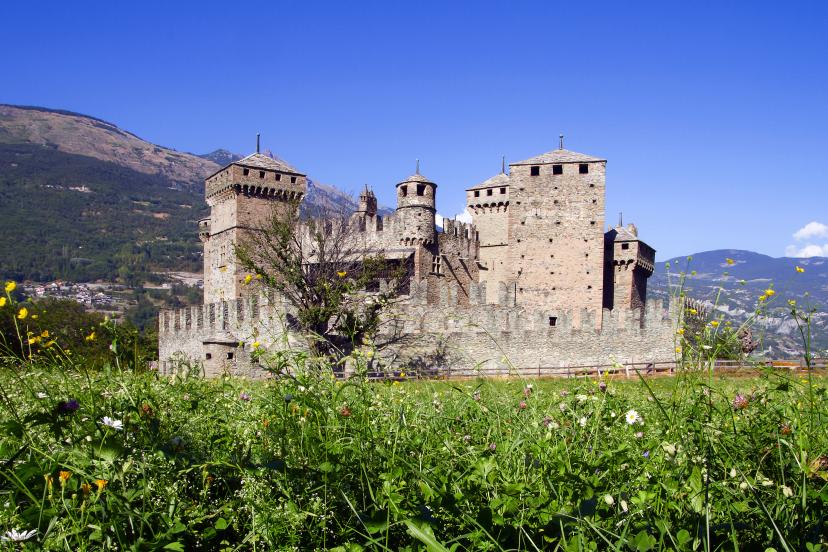
Castello di Fénis
Located in Italy’s Aosta Valley, Castello di Fénis is one of the best-preserved medieval castles in the country. Dating to the 13th–15th centuries, it was never built for defense but as a noble residence for the Challant family. Its distinctive towers, double walls, and frescoed courtyard display the refinement of late medieval architecture.

Castello di Cly
Perched on a rocky spur above Saint-Denis in the Aosta Valley, Castello di Cly dates to the 11th century and is among the oldest castles in the region. Though now partially in ruins, its chapel with Romanesque frescoes and commanding position over the Dora Baltea valley reveal its former strength.

Roman Theatre, Aosta
Built in the 1st century AD, the Roman Theatre of Aosta is one of the most striking remnants of Roman presence in the Alps. Its towering façade — once part of a structure seating up to 4,000 spectators — still dominates the city’s historic center. The theater hosted public performances and ceremonies, reflecting Aosta’s importance as a provincial capital.
2. Northeastern Italy: Veneto & the Adriatic Coast
Veneto and Friuli-Venezia Giulia form Italy’s northeastern edge — a region shaped by art, trade, and sea breeze. Venice’s marble palaces rise from the lagoon, Verona hums with operatic romance, and the Adriatic coast shimmers with light. Inland, rolling vineyards and quiet medieval villages reveal a slower, softer Italy.
Among the best cycling holidays in this region is the Venice to Piran Cycling Tour, tracing a path from lakes to sea. Scroll down to discover the highlights.
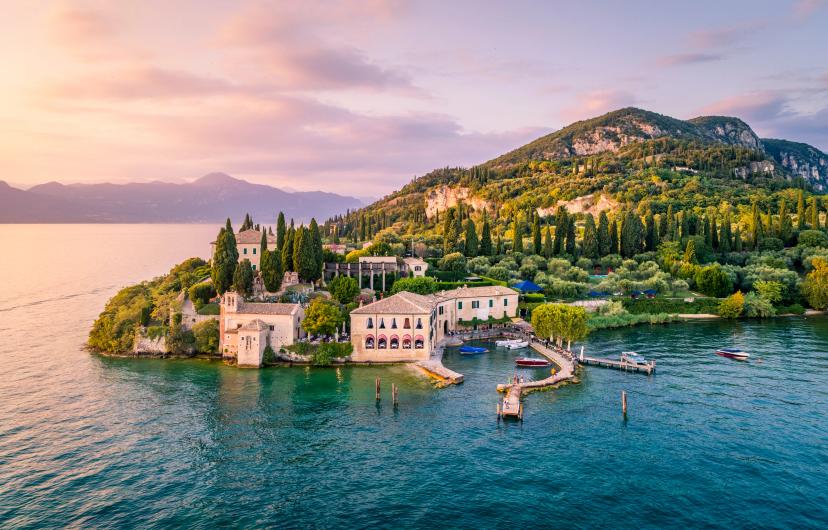
Lake Garda
Lake Garda, Italy’s largest lake, is a world of contrasts — where alpine peaks meet olive groves and lemon terraces. Its vast, shimmering surface reflects medieval castles, waterfront villages, and Mediterranean vegetation. Ancient Roman villas still stand along its shores, testifying to centuries of admiration.

Castello Scaligero di Sirmione
Dominating the narrow peninsula of Sirmione on Lake Garda, this 13th-century fortress is one of the best-preserved castles in Italy. Surrounded by water, its walls and towers reflect beautifully in the lake, creating an unforgettable sight. Built by the Scaliger family of Verona, the castle once guarded the port and the town.
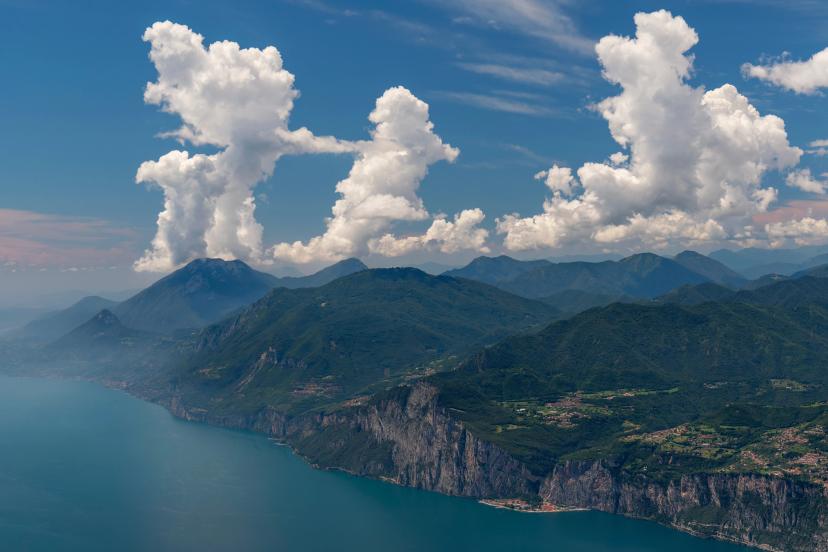
Mt. Baldo Range
The Monte Baldo range stretches for over 30 kilometers along the eastern shore of Lake Garda, earning the nickname “Garden of Europe” for its exceptional biodiversity. Its slopes host alpine and Mediterranean species side by side, creating a natural paradise of rare flowers and sweeping vistas.
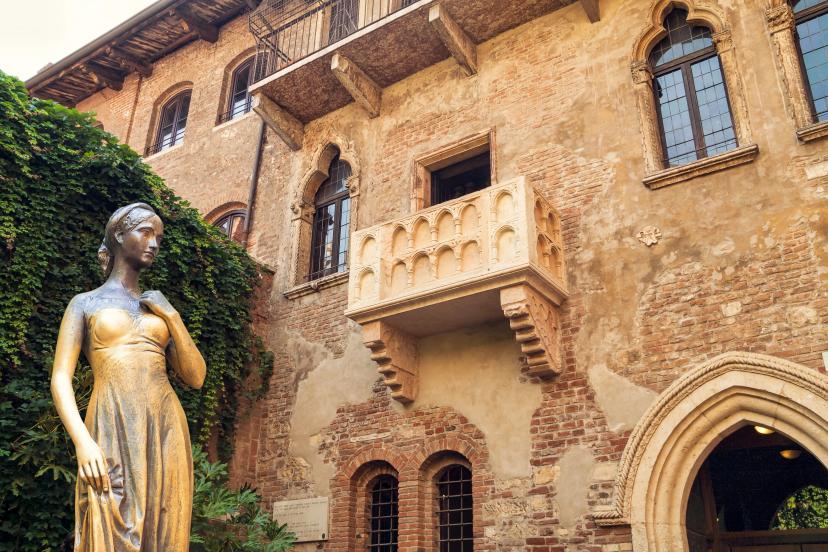
Verona
A UNESCO World Heritage Site, Verona is a city where Roman grandeur and Renaissance elegance coexist in perfect harmony. Its ancient arena — still used for operas today — recalls the city’s importance in Imperial times, while medieval bridges and piazzas invite leisurely exploration.
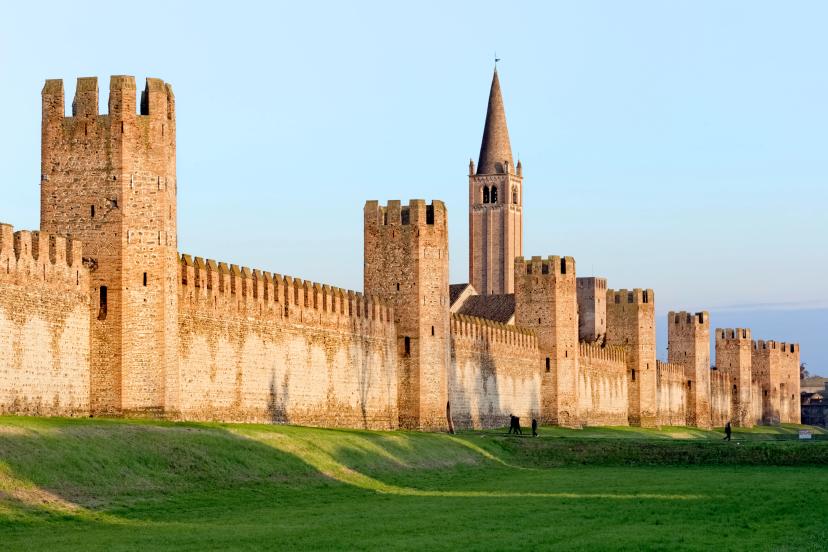
Montagnana
Montagnana is one of Europe’s best-preserved medieval walled towns, encircled by nearly two kilometers of perfectly intact 14th-century walls and 24 towers. Inside, cobbled streets lead to elegant palaces and lively squares that reflect centuries of prosperity. The massive defensive gates once guarded the borderlands of the medieval Carraresi lords of Padua.
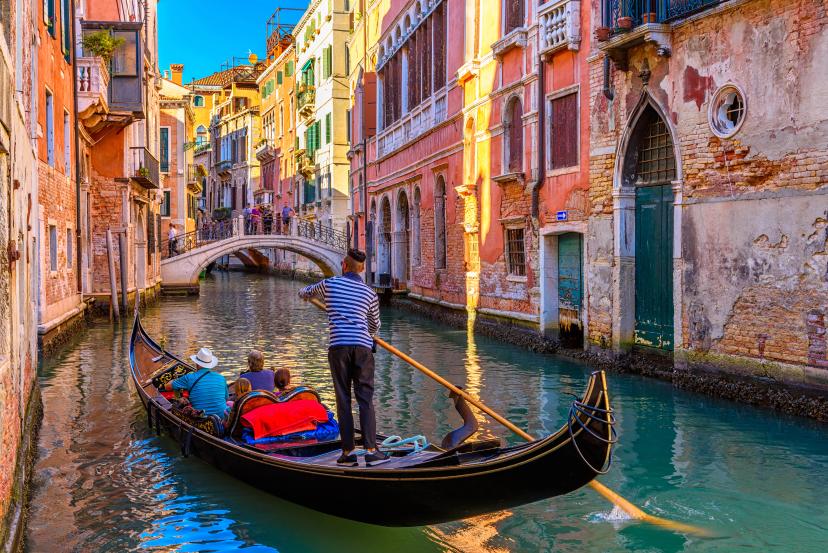
Venice Canals
The canals of Venice form the lifeblood of one of the world’s most extraordinary cities. Winding through a maze of over a hundred small islands, these shimmering waterways replace roads, carrying gondolas and vaporetti past marble palaces and hidden courtyards. The Grand Canal, lined with Gothic and Renaissance façades, tells the story of a city that once ruled the seas.

Rialto

Miramare Castle
Perched above the Gulf of Trieste, Miramare Castle is a 19th-century neo-Gothic residence built for Archduke Ferdinand Maximilian of Austria and his wife Charlotte. The castle’s white stone façade contrasts strikingly with the deep blue sea below, while its lush gardens brim with exotic plants collected from around the world. Inside, lavishly preserved rooms tell the story of imperial elegance and tragic destiny. It remains one of Italy’s most graceful seaside palaces.
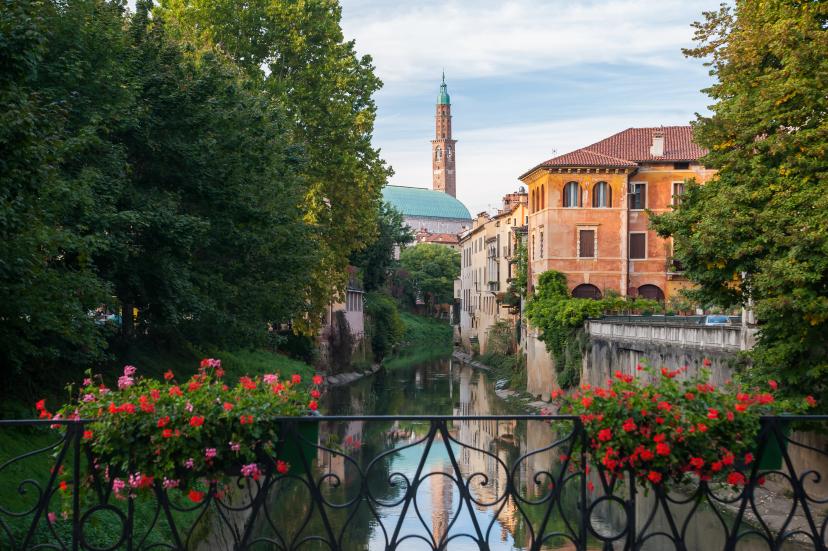
Vicenza
A UNESCO World Heritage city, Vicenza is synonymous with the genius of Andrea Palladio, whose Renaissance architecture shaped not only the city’s skyline but the very principles of classical design. Strolling through its elegant streets reveals palaces, arcades, and loggias that inspired generations of architects.
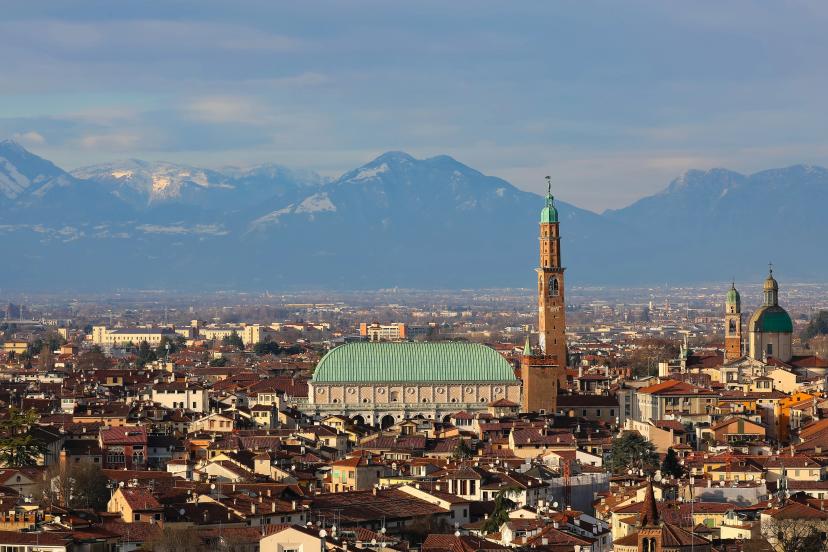
Basilica Palladiana
Dominating Vicenza’s Piazza dei Signori, the Basilica Palladiana is Andrea Palladio’s architectural masterpiece. Completed in the 16th century, its harmonious arches and white marble loggias embody the ideals of Renaissance proportion and symmetry. Once the seat of civic power, the basilica now hosts exhibitions and cultural events beneath its distinctive copper-green roof.
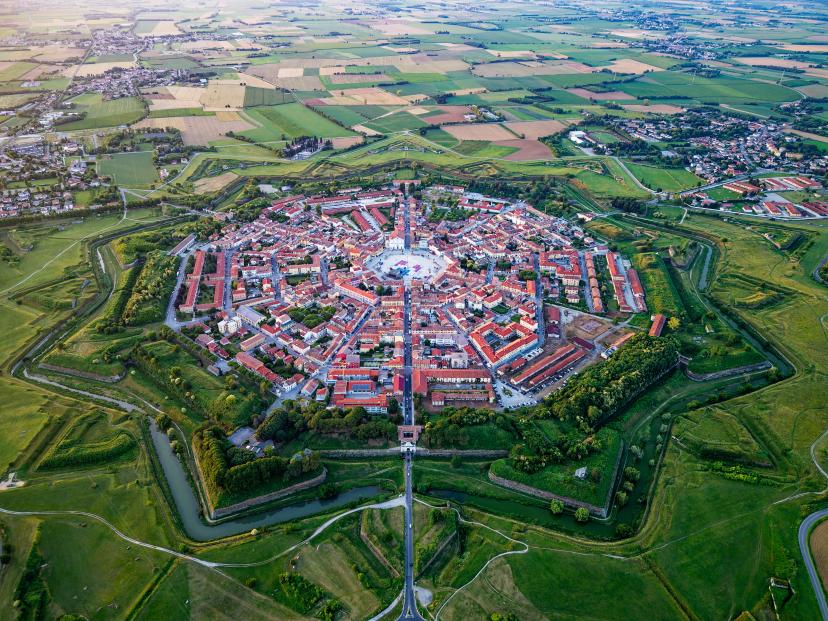
Palmanova
Palmanova is one of Europe’s most extraordinary examples of Renaissance military architecture — a perfect nine-pointed star fortress city. Built by the Republic of Venice in 1593 to defend against Ottoman invasions, its geometric precision and symmetry reflect both strategic brilliance and humanist ideals. From above, its layout is breathtakingly exact, with streets radiating from a central square.

Lake Como
Lake Como, one of Italy’s most enchanting lakes, shimmers beneath the towering Alps in a deep glacial basin shaped like an inverted “Y.” Its shores are lined with cypress trees, elegant villas, and pastel-colored villages that seem to float between water and mountain. The lake has long captivated artists, writers, and aristocrats — from Pliny the Younger to George Clooney — drawn by its tranquil beauty and Mediterranean-meets-Alpine atmosphere.
3. Northwestern Italy: Piedmont & the Wine Hills
In Piedmont, refinement meets authenticity. Nestled between the Alps and the fertile Po Valley, this region is defined by elegance — royal cities, hazelnut groves, and UNESCO-listed vineyards rolling into the horizon. Here, culture and cuisine intertwine effortlessly: Barolo wine, truffles, and stately castles tell a story of quiet sophistication.
The most scenic cycling holidays in Piedmont include the Gourmet Tour of Piedmont and the Bike Tour Through the Wine Hills of Piedmont. While cycling through the region, these places will leave you speechless:

Monferrato
A UNESCO World Heritage landscape, Monferrato is a land of gentle hills blanketed in vineyards, castles, and hazelnut groves. Its soils produce some of Italy’s most celebrated wines, including Barbera d’Asti and Grignolino. Beyond its enological fame, Monferrato is rich in art and tradition — Romanesque churches, frescoed sanctuaries, and villages where time seems to slow down.
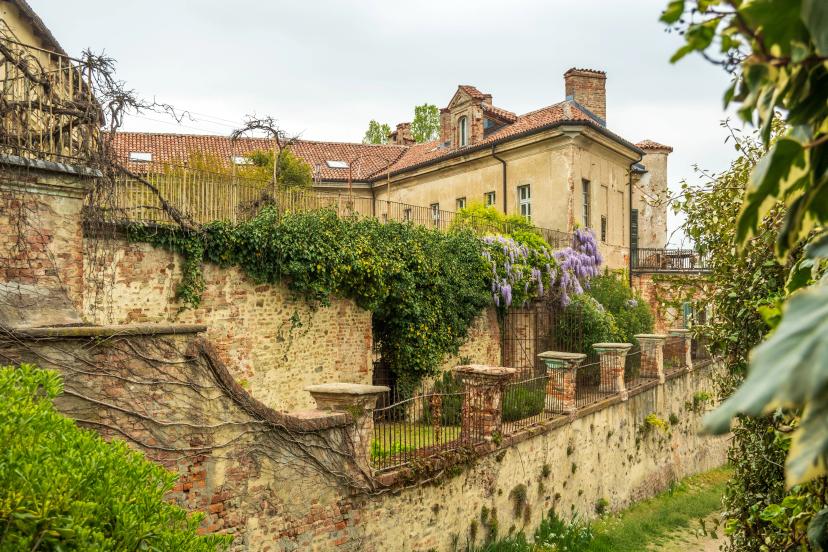
San Sebastiano Po
A tranquil village east of Turin, San Sebastiano Po overlooks the river valley that bears its name. Its historic center preserves rustic charm, with cobblestone lanes and a parish church dating to medieval times. Surrounded by fields, orchards, and vineyards, the village offers a serene glimpse into everyday Piedmontese life — authentic, unhurried, and deeply connected to the rhythms of the land.
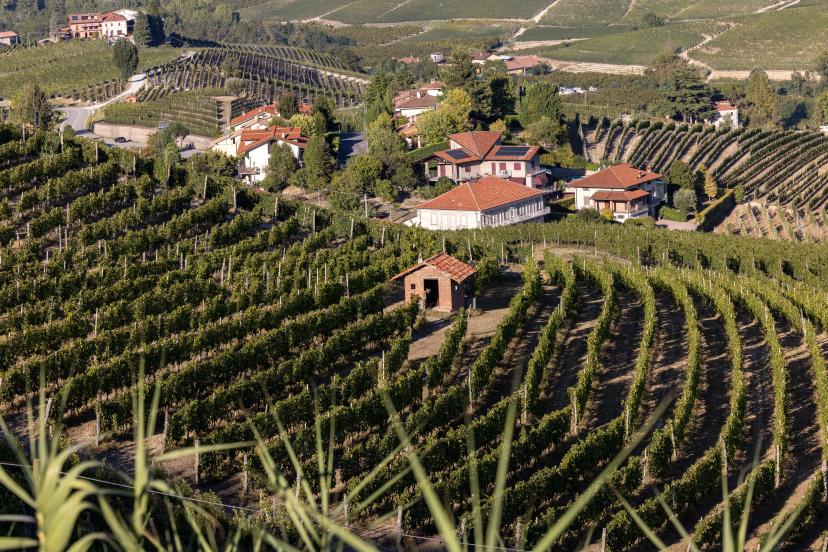
Langhe-Roero Vineyards
Another UNESCO-listed jewel, the Langhe-Roero vineyards epitomize the harmony between people and land. This rolling sea of vines produces world-renowned wines such as Barolo and Barbaresco. Scattered among the hills are stone villages, medieval towers, and wine estates where centuries of craftsmanship have perfected the art of viticulture.
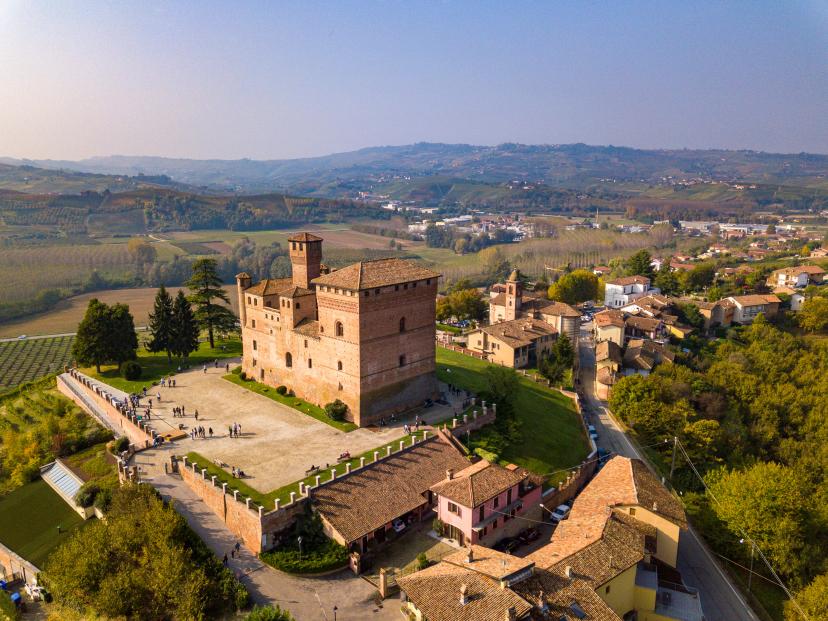
Castello di Grinzane Cavour
Dominating the vineyards near Alba, this 13th-century castle is one of Piedmont’s most iconic landmarks. Once home to Count Camillo Benso di Cavour — a key architect of Italian unification — it now houses a museum and the Enoteca Regionale dedicated to local wines.
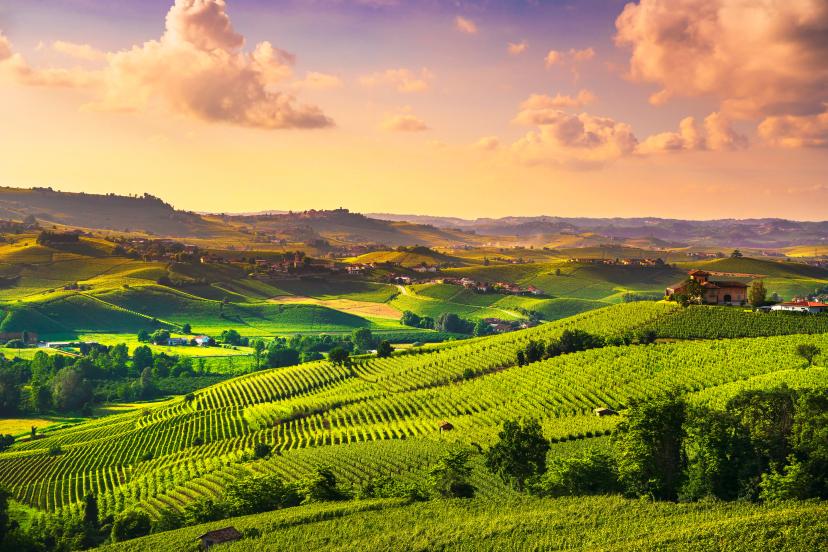
Piedmont
The region of Piedmont itself is a tapestry of mountains, lakes, vineyards, and royal cities. From the snow-covered Alps to the rolling Langhe hills, it’s a land of contrasts united by elegance and craftsmanship. Piedmont gave birth to the Italian unification movement, the Fiat automobile, and the Slow Food philosophy.
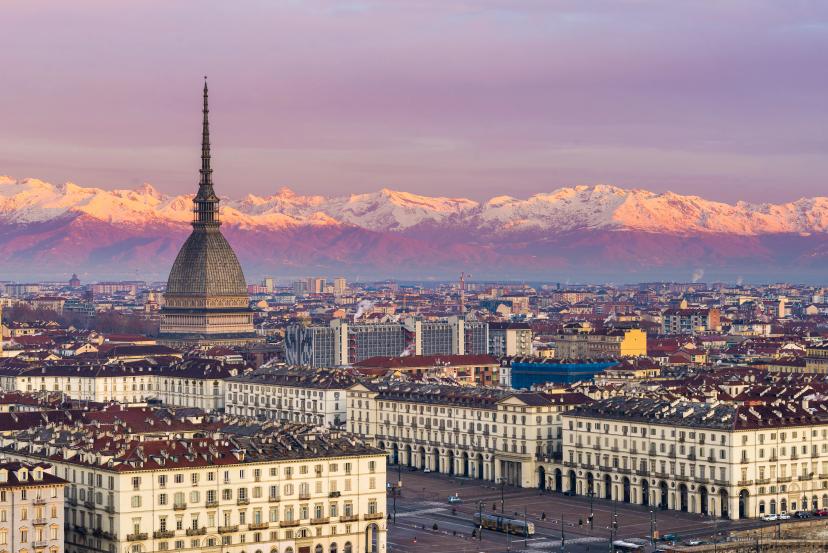
Torino
Torino, the elegant capital of Piedmont, dazzles with baroque avenues, grand piazzas, and arcaded streets framed by the Alps. Once the seat of the Savoy dynasty, it became Italy’s first capital in 1861 and remains a hub of art, culture, and gastronomy. The city is famed for its historic cafés, where the chocolate-hazelnut gianduja was invented, and for its refined aperitivo culture.
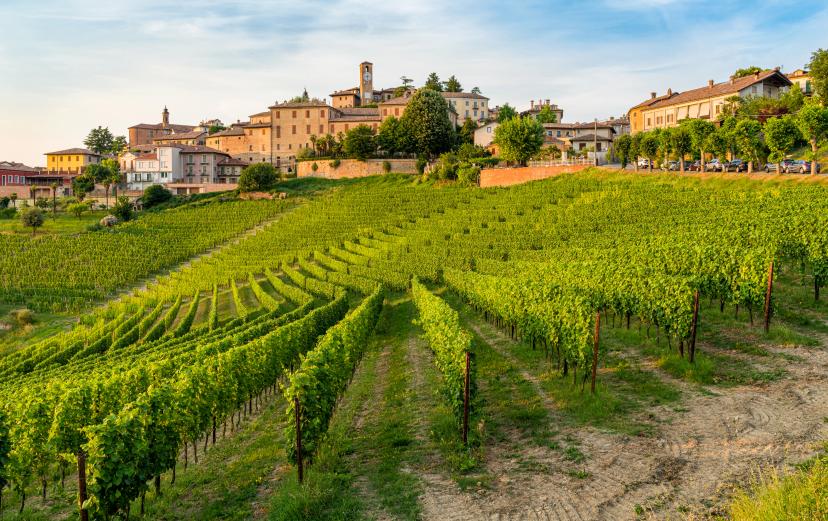
Neive
Listed among I Borghi più belli d’Italia (Italy’s most beautiful villages), Neive is a gem of the Langhe hills. Its narrow cobbled lanes lead past stone houses and wine cellars that open onto sweeping vineyard views. The village’s medieval tower and baroque churches reflect centuries of prosperity tied to winemaking.

Superga Basilica
Dominating Turin’s skyline from a hill 670 meters above the city, the Basilica of Superga is one of Piedmont’s most recognizable landmarks. Designed by architect Filippo Juvarra in the early 18th century, it was built in gratitude for a military victory by the House of Savoy. Its baroque dome and twin bell towers can be seen from miles away, and its crypt houses the tombs of the Savoy kings.
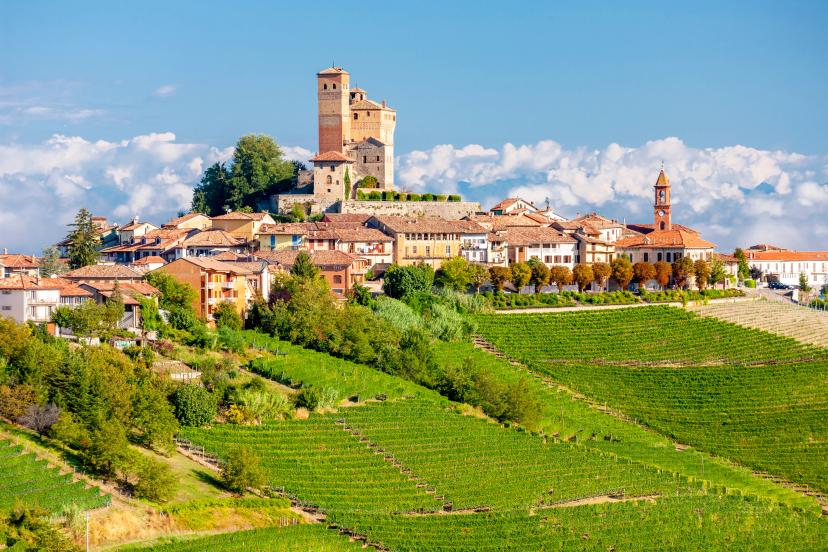
Alba
The unofficial capital of the Langhe region, Alba is synonymous with fine wine and white truffles. Its historic center features red-brick towers, Roman foundations, and elegant piazzas lined with boutiques and enotecas. Each autumn, the Alba White Truffle Fair draws visitors from around the world to savor one of Italy’s rarest delicacies.
4. Central Italy: Tuscany & Umbria
If Italy has a soul, it beats strongest in Tuscany and Umbria — lands of cypress-lined lanes, hilltop villages, and Renaissance harmony. Here, every view feels painted by hand: ochre fields, stone farmhouses, and sunlit vineyards blending into history and art.
The best cycling holidays in Central Italy, such as the Epic Tour of Tuscany and the Tuscany Gravel Cycling Tour, lead through landscapes that have inspired artists for centuries.
The romance lingers in the air in these places:

Orvieto
Rising atop a sheer cliff of volcanic tuff, Orvieto is a city suspended between heaven and earth. Its origins date back to the Etruscans, and beneath its streets lies a labyrinth of ancient tunnels and wells. The Gothic cathedral, with its dazzling façade of mosaics and sculpture, ranks among Italy’s greatest architectural treasures.
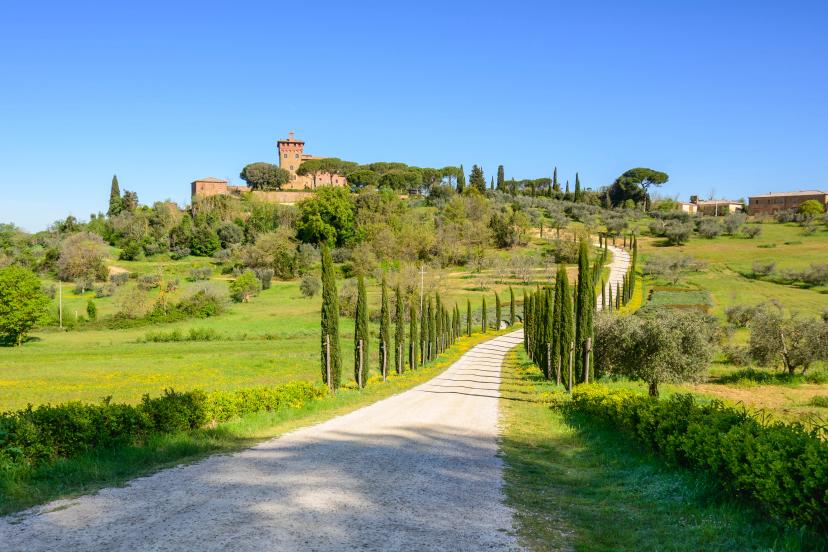
Val d’Orcia
A UNESCO World Heritage landscape, Val d’Orcia embodies the quintessential image of Tuscany — soft rolling hills, cypress-lined lanes, and medieval towns perched above golden fields. The valley, shaped by centuries of harmonious farming, has inspired painters since the Renaissance. Today, it remains one of Italy’s most photographed regions, where light, color, and human craftsmanship merge into a scene of perfect balance.

Montalcino
Crowned by a medieval fortress and encircled by vineyards, Montalcino is synonymous with the celebrated Brunello wine. Its cobbled streets and honey-colored stone buildings tell stories of prosperity and pride. From the fortress ramparts, sweeping views extend across olive groves and the rolling Val d’Orcia.

Siena
Siena’s medieval heart beats in the shell-shaped Piazza del Campo, where the famous Palio horse race takes place each summer. Once a rival to Florence, the city flourished in art, architecture, and civic life during the Middle Ages. Its striped cathedral, Gothic town hall, and frescoes by Lorenzetti reveal the depth of its cultural heritage.
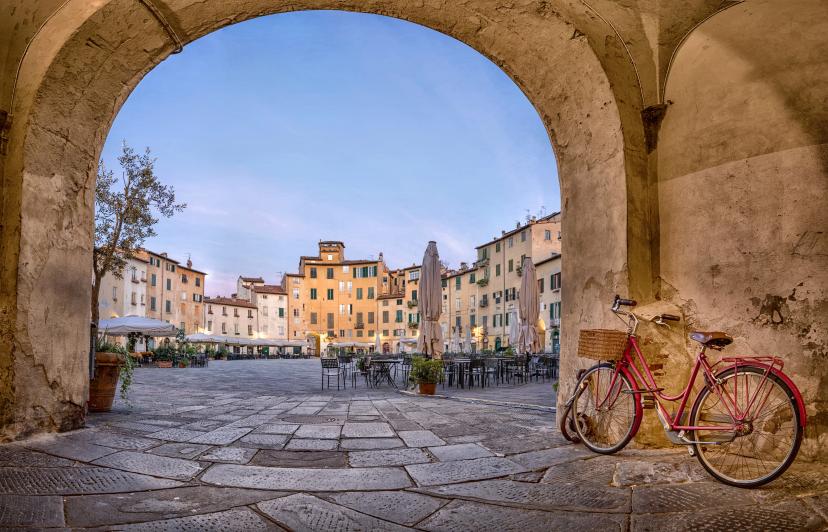
Lucca
Encircled by perfectly preserved Renaissance walls, Lucca is one of Tuscany’s most graceful cities. Its cobbled streets reveal a mosaic of Roman origins, medieval towers, and elegant piazzas. The oval-shaped Piazza dell’Anfiteatro follows the footprint of an ancient Roman arena, while the city’s cathedral holds priceless art by Nicola Pisano.

Chianti
Between Florence and Siena, the Chianti region is a rolling tapestry of vineyards, cypress avenues, and hilltop villages. For centuries, its landscape has been shaped by winemakers whose craft is as refined as the land is beautiful. Medieval castles, rustic farmhouses, and the scent of grapes ripening in the sun create an atmosphere of harmony and abundance.

Montepulciano
Montepulciano, a Renaissance hilltop town rising between Val d’Orcia and Val di Chiana, is famous for its Vino Nobile. Its streets climb toward a magnificent piazza crowned by the Palazzo Comunale and the cathedral. The town’s elegant architecture reflects centuries of prosperity, while surrounding vineyards blanket the hills in perfect symmetry.

Castle of Brolio
Standing amid vineyards near Gaiole in Chianti, the Castle of Brolio is one of the region’s most storied landmarks. Owned by the Ricasoli family since the 12th century, it played a key role in the unification of Italy — Baron Bettino Ricasoli, known as the “Iron Baron,” was a statesman and the creator of the original Chianti wine formula.
5. Southern Italy & the Heel of the Boot
Southern Italy bursts with life, flavor, and sunlight. From the whitewashed trulli of Puglia to the honey-colored stones of Matera and the rugged cliffs of the Ionian coast, this is Italy at its most vibrant and authentic. Its slower rhythm, warm hospitality, and unforgettable food capture the very essence of Mediterranean living.
The most iconic cycling tour in Puglia, in the south, includes all the postcard-worthy landmarks of the region:
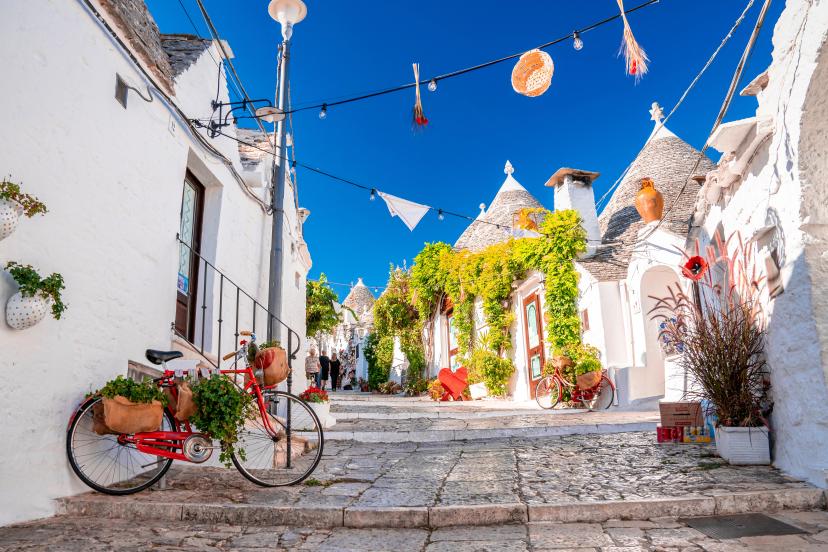
Alberobello
A UNESCO World Heritage Site, Alberobello is famous for its trulli — whitewashed, cone-roofed houses built without mortar. These unique dwellings, dating back to the 14th century, were ingeniously constructed from local limestone and symbolize Puglia’s rural ingenuity. Wandering through the Rione Monti and Aia Piccola districts feels like stepping into a fairy-tale village.
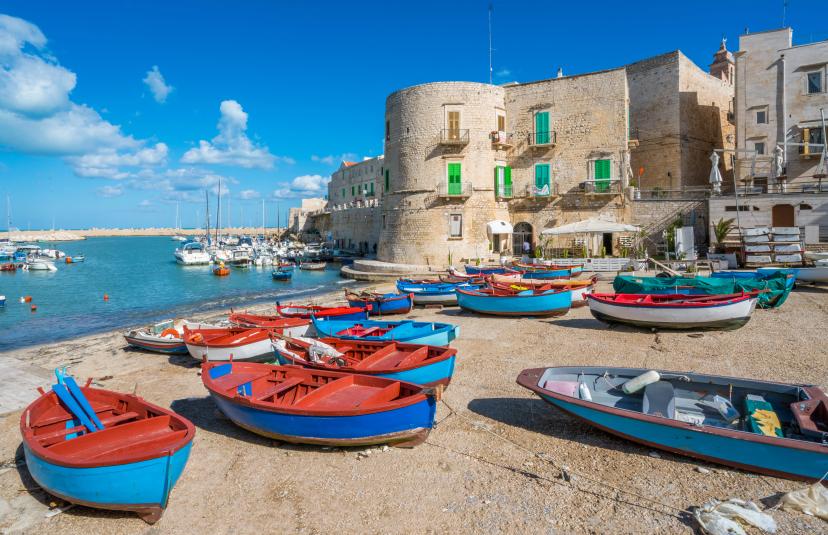
Giovinazzo
Giovinazzo is a charming coastal town north of Bari, where white limestone streets lead to a small harbor framed by medieval walls. Its historic center preserves the atmosphere of a quiet fishing village, punctuated by elegant churches and graceful loggias. The 12th-century cathedral, with its Romanesque façade, overlooks the sparkling Adriatic.
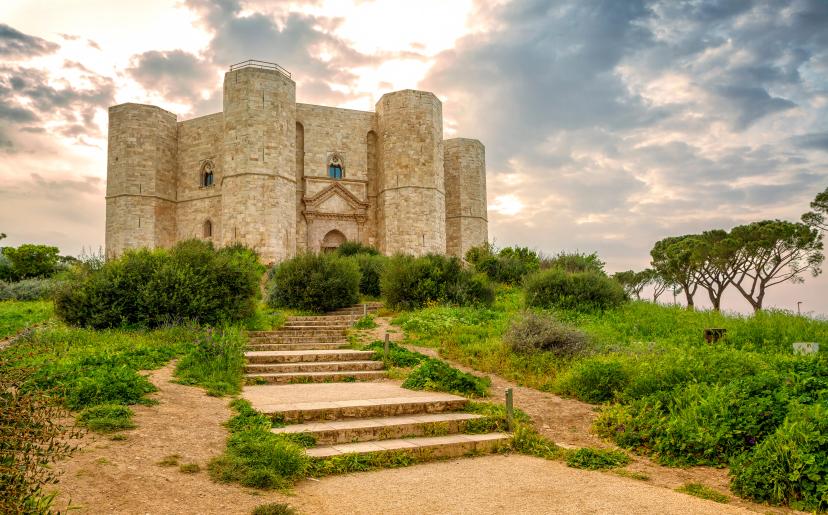
Castel del Monte
Crowning a solitary hill in northern Puglia, Castel del Monte is one of Italy’s most mysterious monuments. Built in the 13th century by Emperor Frederick II, the octagonal fortress combines elements of classical antiquity, Islamic art, and Gothic architecture. Its perfect symmetry and astronomical alignments have inspired countless theories about its purpose — fortress, temple, or philosophical statement.
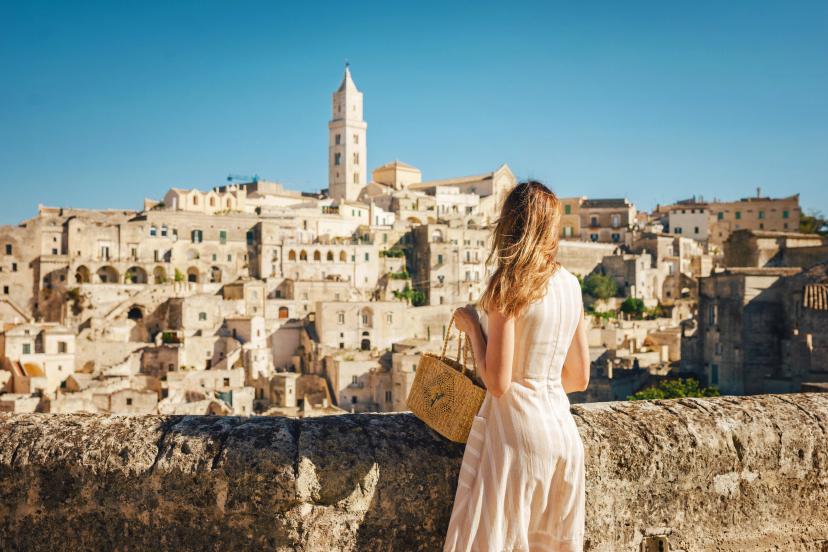
Matera
This UNESCO World Heritage Site and European Capital of Culture of 2019, is one of the world’s oldest continuously inhabited cities. Carved into the rock, its ancient Sassi cave dwellings form a labyrinth of homes, churches, and stairways that tumble down a ravine. Once a symbol of poverty, Matera has transformed into a cultural beacon — where boutique hotels and art galleries coexist with prehistoric history.

Porta Napoli
Erected in 1548, Porta Napoli is the triumphal arch marking the entrance to Lecce’s historic center. Built in honor of Emperor Charles V, it symbolizes the city’s loyalty to the Spanish crown. Its classical design, adorned with coats of arms and carved garlands, reflects the elegance of Lecce’s Baroque style.
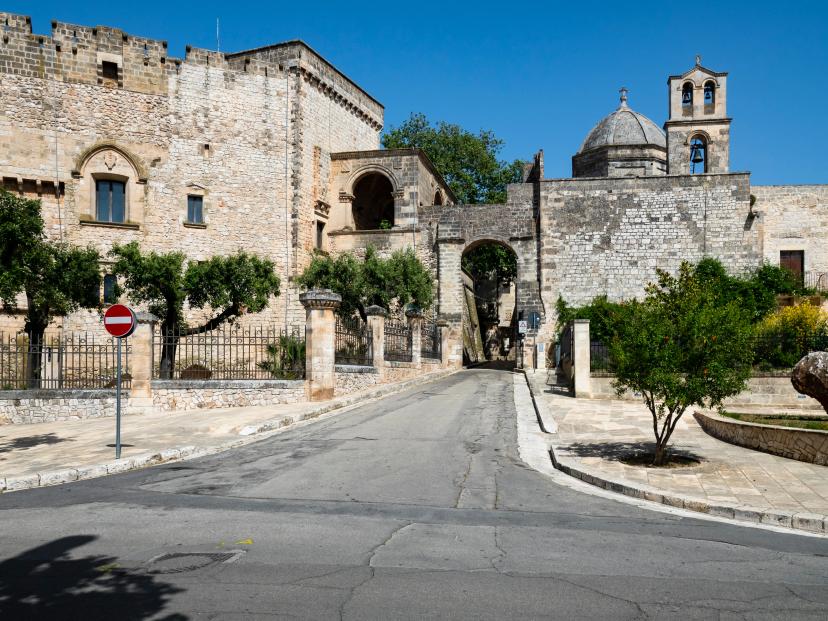
Castello Dentice di Frasso di Carovigno
Dominating the hilltop town of Carovigno, this 15th-century castle combines medieval fortifications with Renaissance refinement. Built by the Dentice di Frasso family, its triangular layout is unique in Puglia and offers panoramic views toward the Adriatic Sea. The castle’s courtyards, noble halls, and defensive towers evoke centuries of aristocratic life and regional history.
6. The Islands: Sicily & Sardinia
Italy’s islands feel like worlds apart — Sicily, rich in history, Greek temples, and volcanic drama, and Sardinia, wild and untamed with turquoise coves and rugged highlands.
The Sicily Bike Tour and Sardinia eMTB Cycling Holidays are among the most unforgettable island adventures, combining natural splendor with centuries of cultural depth.
Explore below the highlights — temples, cliffs, and castles that make Italy’s islands truly one of a kind.
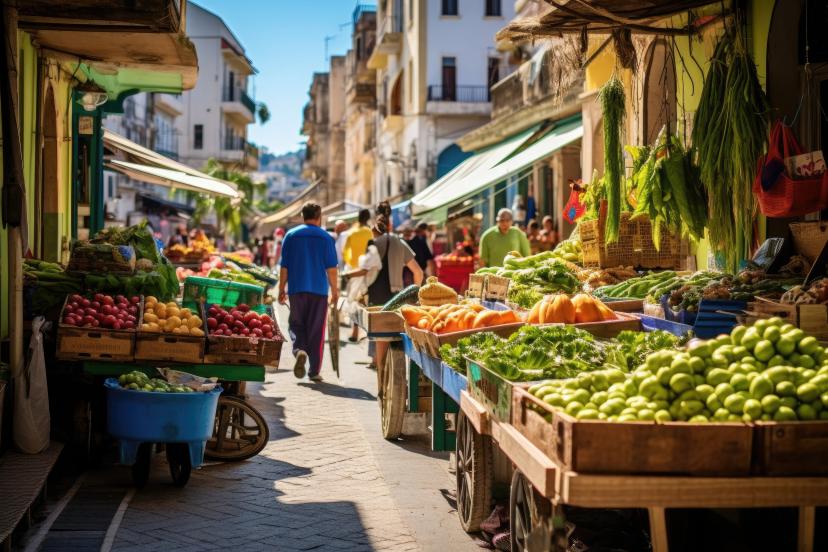
Palermo Markets
The open-air markets of Palermo — Ballarò, Capo, and Vucciria — are among the liveliest and oldest in Europe. They echo the city’s Arabic heritage with their vibrant colors, shouted prices, and aromas of sizzling street food. Here, locals and visitors alike taste the essence of Sicilian life: grilled artichokes, arancini, swordfish, and citrus stacked in pyramids.

Teatro Antico di Taormina
Carved into the hillside with Mount Etna and the Ionian Sea as its backdrop, the ancient theater of Taormina is one of the most spectacular archaeological sites in the world. Built by the Greeks in the 3rd century BC and expanded by the Romans, it could seat over 5,000 spectators. Its semicircular form frames one of the most iconic views in Italy.

Erice Panorama
Perched atop Mount Erice at nearly 750 meters above sea level, this medieval town offers one of the most breathtaking panoramas in Sicily. From its ancient walls, the view sweeps across the Egadi Islands, Trapani’s salt pans, and the endless Mediterranean horizon. Stone lanes wind past flower-filled courtyards and churches steeped in legend.
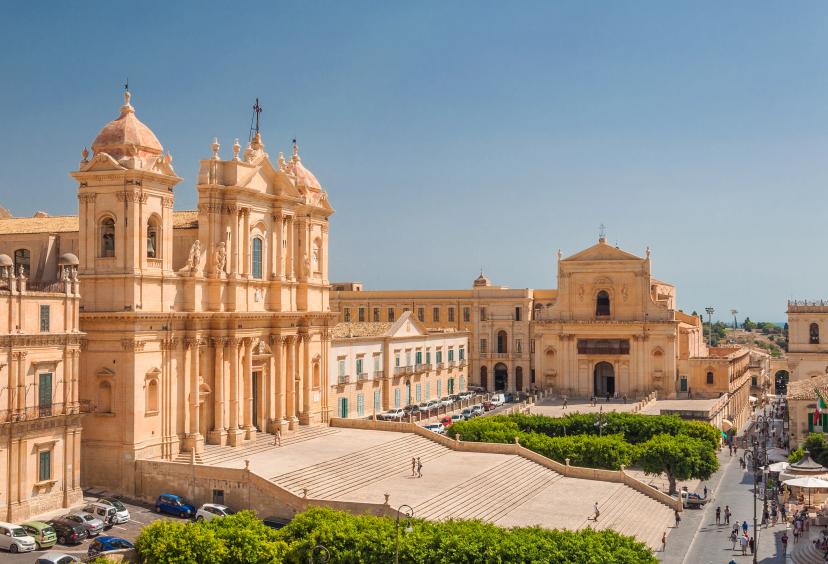
Noto
Noto is the jewel of Sicilian Baroque architecture and a UNESCO World Heritage Site. Rebuilt after the devastating earthquake of 1693, it was designed as a harmonious vision of symmetry, light, and elegance. The golden-hued limestone of its cathedrals and palaces glows at sunset, earning it the nickname “the stone garden.”
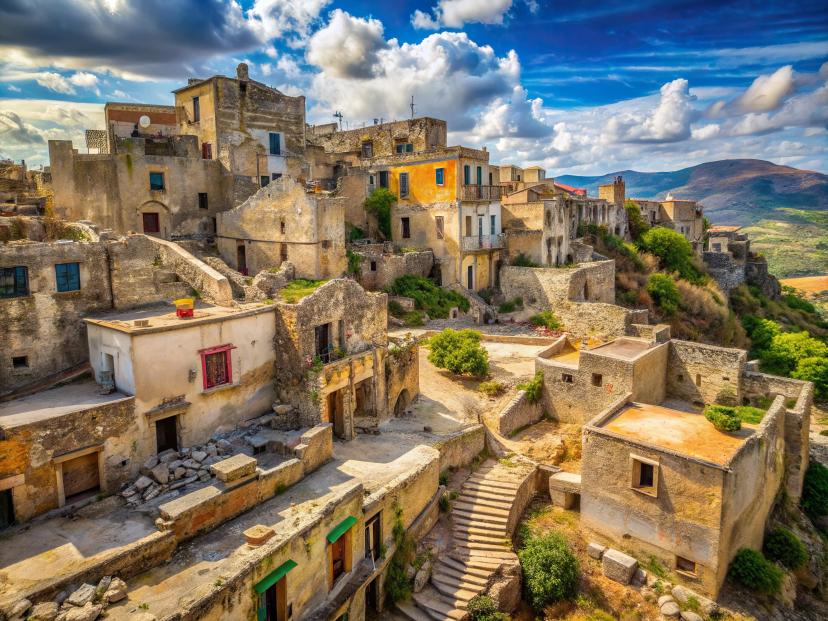
Ruins of Gibellina
The ruins of Gibellina stand as a haunting memorial to the 1968 Belice earthquake that destroyed this Sicilian town. Instead of rebuilding on the same site, artists and architects transformed the ruins into a monumental work of land art — Cretto di Burri. Conceived by Alberto Burri, the site covers the old town with vast white concrete slabs, preserving its street plan like a silent map of memory.
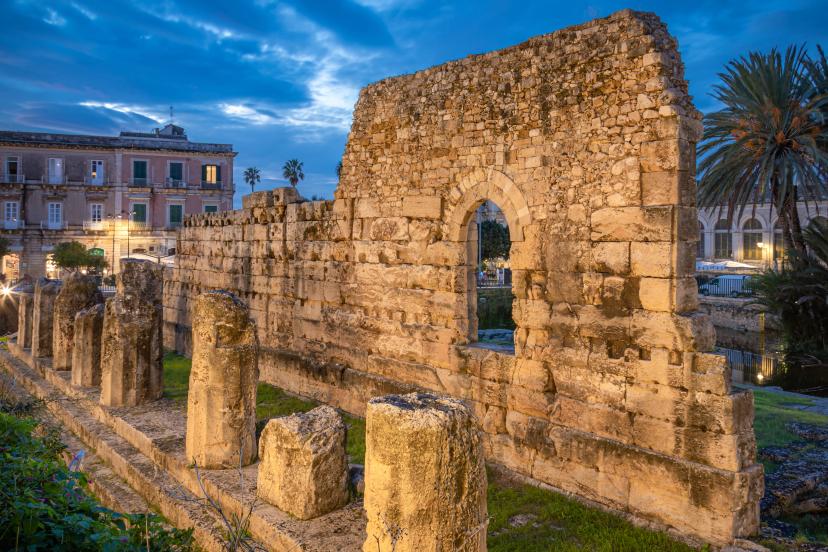
Temple of Apollo, Syracuse
Standing in the heart of Ortigia, the Temple of Apollo is one of the oldest Greek temples in Sicily and UNESCO heritage site, dating back to the 6th century BC. Its massive Doric columns and weathered stones evoke the grandeur of ancient Syracuse, once one of the most powerful cities of the Mediterranean.

Ponte dei Saraceni
The “Bridge of the Saracens” near Adrano spans the Simeto River with elegant lava-stone arches dating back to Norman times, though legend attributes it to Arab builders. Its dark volcanic stones contrast beautifully with the surrounding landscape of orchards and riverbanks. The bridge has withstood floods and centuries of change, standing as a symbol of Sicily’s enduring blend of cultures and craftsmanship.

Corleone
Nestled among rolling hills in Sicily’s interior, Corleone is a town of striking contrasts — known both for its medieval roots and its more recent role in Sicily’s Mafia history. Once a Norman stronghold and later a center of peasant revolts, it gained international notoriety in the 20th century as the birthplace of several Mafia figures and as the namesake of The Godfather.
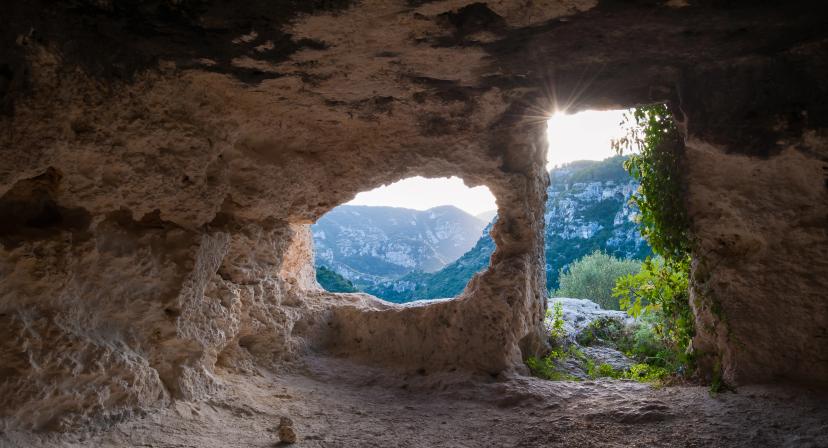
Pantalica Nature Reserve
A UNESCO World Heritage Site, the Pantalica Nature Reserve shelters thousands of rock-cut tombs carved into the limestone cliffs of a deep canyon. These prehistoric necropolises, dating from the 13th to 7th centuries BC, form one of the most remarkable archaeological sites in Sicily. The Anapo River winds below, framed by oleanders and wild orchids.

Nuraghe Asoru
The Nuraghe Asoru is one of Sardinia’s thousands of mysterious stone towers built by the Nuragic civilization between 1800 and 500 BC. Rising from a gentle hill near Villagrande Strisaili, this megalithic monument once served as both a fortress and a community center. Its circular chambers, built from massive basalt blocks without mortar, testify to extraordinary prehistoric engineering.
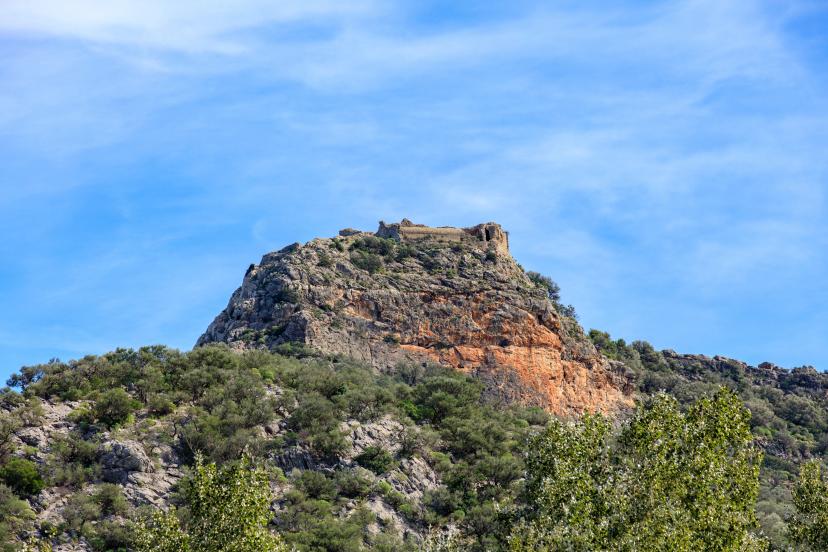
Castello di Quirra
Perched high on a rocky ridge overlooking the southeastern coast of Sardinia, the Castello di Quirra dates to the 14th century. Its strategic position once guarded the trade routes between Cagliari and Ogliastra. Though partly in ruins, its crumbling towers and walls evoke centuries of medieval life and coastal defense.
La Fine — But Not the End!
Italy is overflowing with treasures — ancient temples, hidden villages, dramatic cliffs, and cities that feel eternal. With so many incredible places to see, it can feel a little “mamma mia! — how do you fit it all in?”
That’s where we come in! Let’s chat and create your perfect cycling holiday in Italy — a journey tailored to your pace, your passions, and your cycling style.

Hassle-Free
We handle itineraries, accommodations, and anything else you prefer not to deal with, so you can enjoy a carefree holiday.

Completely Customizable
Flexibility is our middle name — whether you want more or less, or just beyond ordinary, we’ll make it happen.

Book with confidence
We are a financially protected company, fully bonded and insured, keeping your money safe and allowing you to travel with confidence.

Unbeatable support
Our 24/7 customer support is where we show our passion, bringing you a better experience by making your well-being our number one priority.
.jpg&w=3840&q=75)
